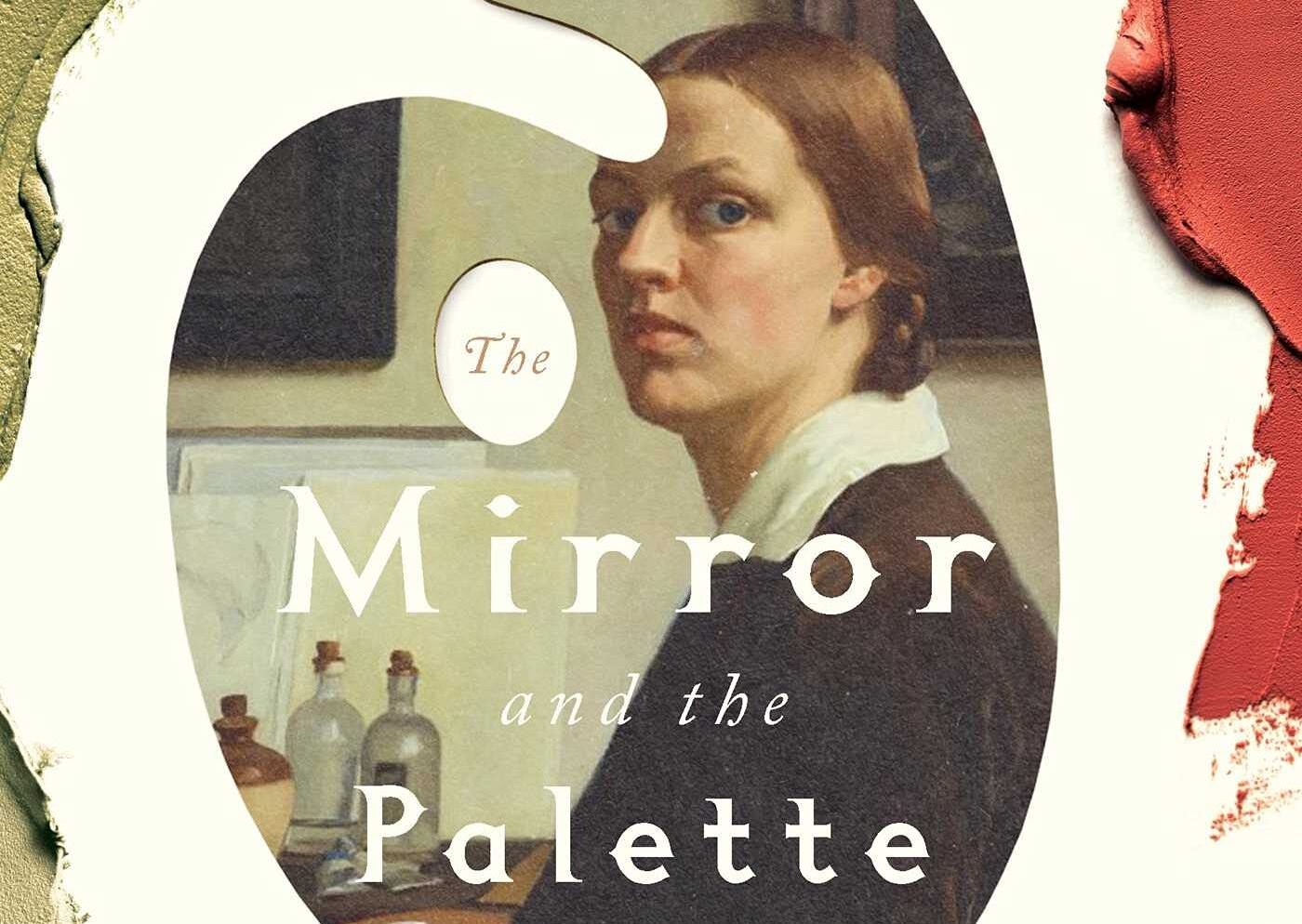Against All Odds
Women have always made art – outside of Europe, women have played a key part in creating the art and craft of their communities. But in the West, women have made art against tremendous odds. Restrictions imposed by law, religion, culture, and convention have made the journey of the female artist an uphill struggle. As Higgie states in her prologue:
She’s in competition with history, which has always been dismissive of her power. Until very recently, museums wouldn’t buy her work, art historians wouldn’t acknowledge her and commercial galleries would only rarely represent her. She’s a miracle, a marvel, a mystic, a seductress, a changeling, a visionary, a man-hater, a freak; she’s never considered normal.
The Mirror and the Palette, Pegasus Books, 2021, p. 1.
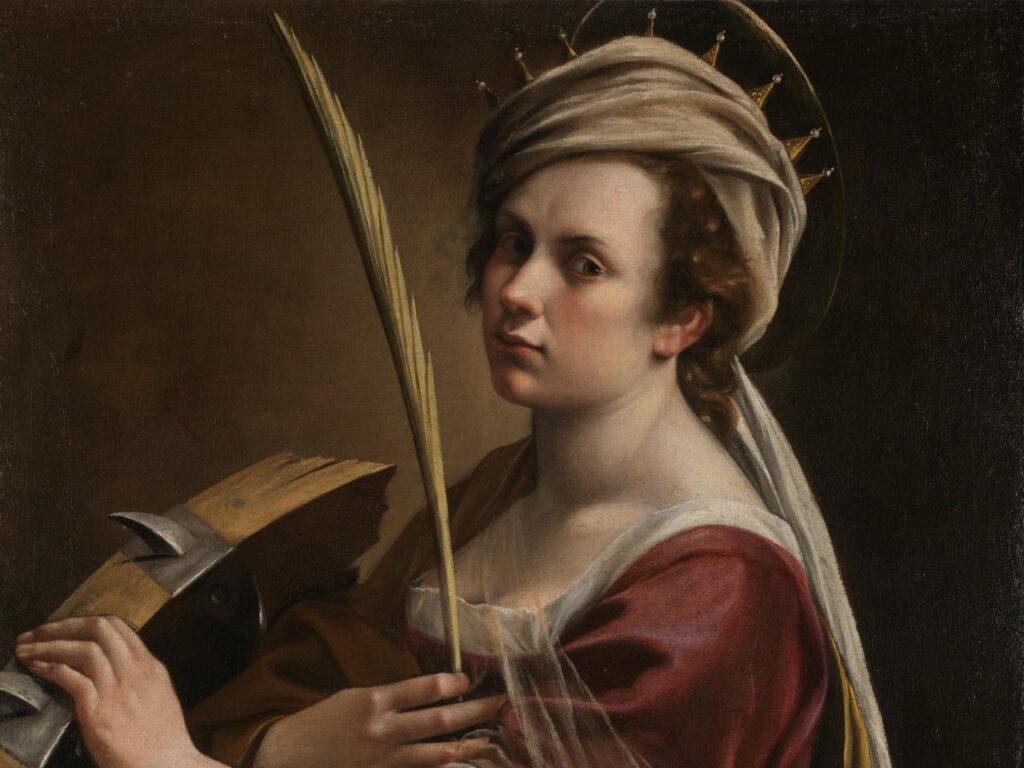
Women’s Self-Portraits: Artemisia Gentileschi, Self-portrait as Saint Catherine of Alexandria, 1615–1617, National Gallery, London, UK. Detail.
Here you can read more about this self-portrait.
Women Did It First!
Higgie tells us that it is in fact women who may have achieved some of the “firsts” in painting. She thinks the art of painting portraits originated with a woman. She discovers that in his Natural History from CE 77, Pliny the Elder tells of how the sculptor Butades of Sicyon discovered portraiture around 650 BCE thanks to his daughter Kora of Sicyon who:
… being deeply in love with a young man about to depart on a long journey, traced the profile of his face, as thrown upon the wall by the light of the lamp.
Natural History, CE 77.
The earliest mention of a self-portrait made with a mirror is another woman – Iaia of Cyzicus, a Roman painter from the first century BCE. Sadly this portrait no longer exists, but Iaia of Cyzicus was a prolific worker and most of her paintings were said to be of women.
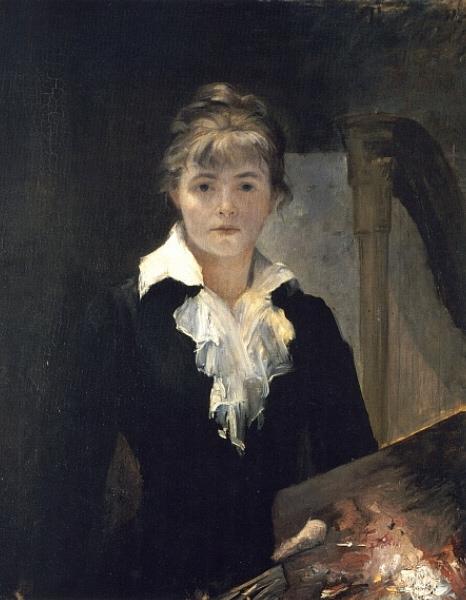
Women’s Self-Portraits: Marie Bashkirtsef, Self-portrait with Palette, 1880, Musée des Beaux-Arts de Nice, Nice, France.
Personal Tales
The book is not encyclopedic – how could it be? No one could cover all of time across the globe. Instead, Higgie has selected a group of self-portraits that she finds fascinating, weaving tales for us of artists whose stories deserve to be told. It’s very personal – you are drawn into very detailed histories of some women, for others, we have minor yet tantalizing glimpses of their unknown lives. Let’s have a look at some of her choices.
1. Ground-Breaking Catharina van Hemessen
This portrait is believed to be the earliest surviving self-portrait of an artist of any gender seated at an easel. On the canvas the artist has written:
I, Caterina van Hemessen have painted myself, 1548, here aged 20
So often for women in art, it is the father’s interest in art that opens doors for the daughters. And that is the case here as Catharina van Hemessen‘s father was the renowned painter, Jan Sanders van Hemessen. To add interest to this story, Catharina van Hemessen is the first female Flemish painter whose work we know of.
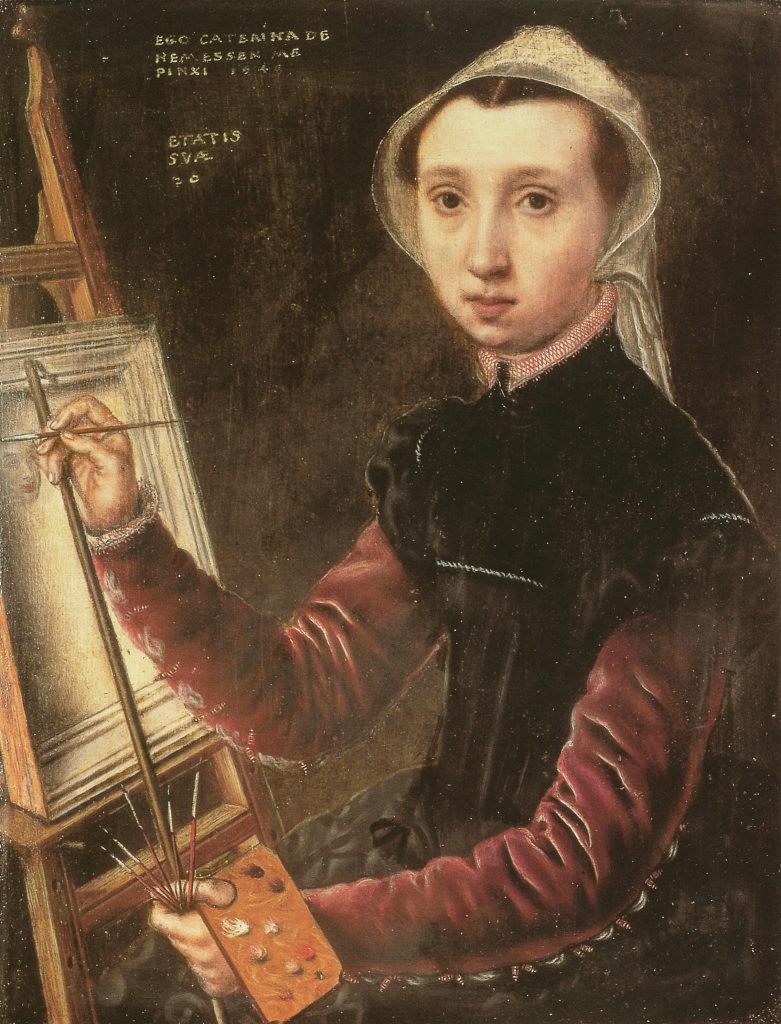
Women’s Self-Portraits: Catharina van Hemessen, Self-portrait at the Easel, 1548, Kunstmuseum Basel, Basel, Switzerland.
2. How to Paint Apricots by Mary Beale
Mary Beale was one of the first professional female painters in Britain. Higgie points out that one of the reasons we know so much about Mary Beale is because she was a writer as well as a painter. On 14 August 1663, she wrote an essay called Observations by MB, on how best to paint apricots. Yes, apricots! This is the first known piece of writing about art by a woman and one of the earliest pieces of writing about art techniques to be published in English. Well done!
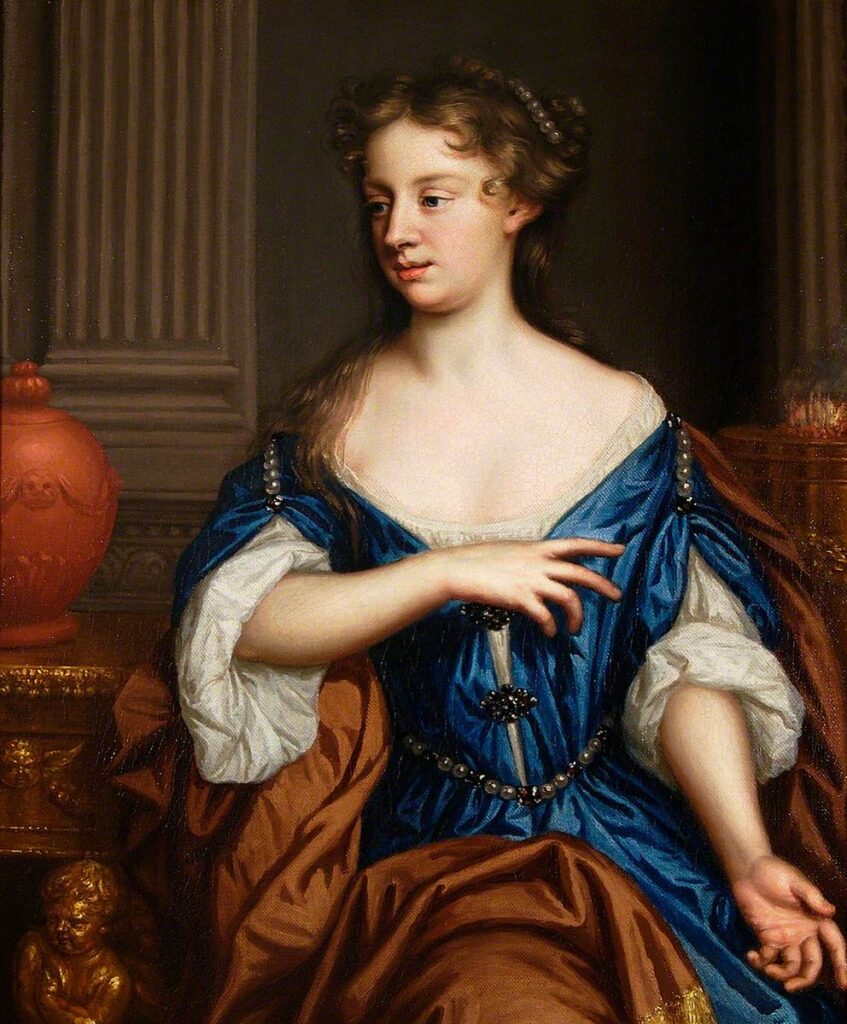
Women’s Self-Portraits: Mary Beale, Self Portrait, 1675, St Edmundsbury Museums, West Suffolk Heritage Service, UK.
3. Diplomat Elisabeth Vigée Le Brun
We have shared the wonderful paintings of Elisabeth Vigée Le Brun with you before. We love her work! A close friend of Marie Antoinette, she had an excellent business head on her and she was a skilled diplomat. In 1782, at the age of 27, she painted Self-Portrait in a Straw Hat. Our writer James W Singer explores this image in fine detail. Higgie tells us that it is possibly an homage (and challenge) to the work Straw Hat by Peter Paul Rubens. The woman Rubens painted is a little coy, but Vigée is joyful, and no wonder as this painting got her admitted to the Royal Academy of Painting.
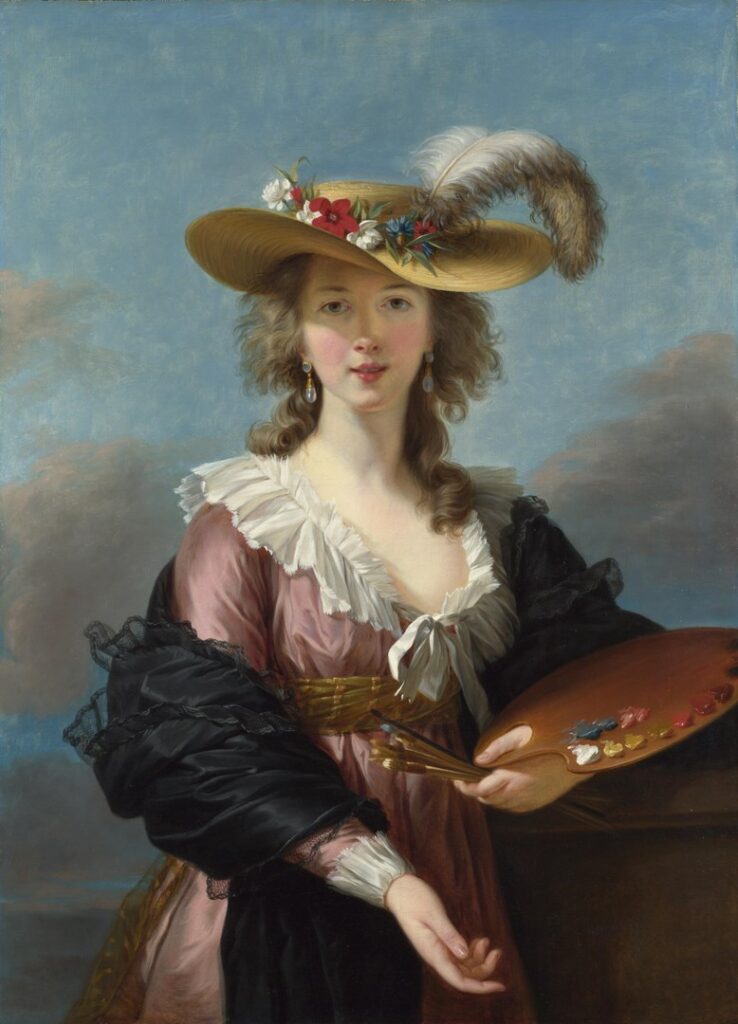
Women’s Self-Portraits: Elisabeth Vigée Le Brun, Self-portrait in a Straw Hat, 1782, National Gallery, London, UK.
4. French Celebrity Adélaïde Labille-Guiard
A contemporary of Elisabeth Vigée Le Brun was Adélaïde Labille-Guiard. Together, they were French painterly celebrities. Adélaïde Labille-Guiard was the first woman to be granted permission to establish a studio for herself and her students at the Louvre in Paris, France. Her 1785 self-portrait includes two of her pupils, Marie Gabrielle Capet and Marie Marguerite Carreaux de Rosemond, and it was a huge success – one of the most famous paintings of its time.

Women’s Self-Portraits: Adélaïde Labille-Guiard, Self-Portrait with Two Pupils, 1785, The Metropolitan Museum of Art, New York, NY, USA.
5. Baroque Feminist Artemisia Gentileschi
Artemisia Gentileschi is one of the great artists of the Baroque, and we have written about her many times at DailyArt Magazine. Higgie tells us that Gentileschi was one of the first women to represent the female experience through the lens of allegory, a method that allowed women the freedom to “express themselves with a complexity that was unthinkable in daily life”.1
One of the first paintings she made after her arrival in Florence in 1613 is Self-Portrait as a Female Martyr. Her Self-Portrait as Catherine of Alexandria, shown at the beginning of this article, was purchased and restored by the National Gallery in London and is now on display. Higgie proposes these are portraits as a show of strength: a young woman who, despite having been brutalized by her society, pictures herself very much alive and in total control of her own representation.2
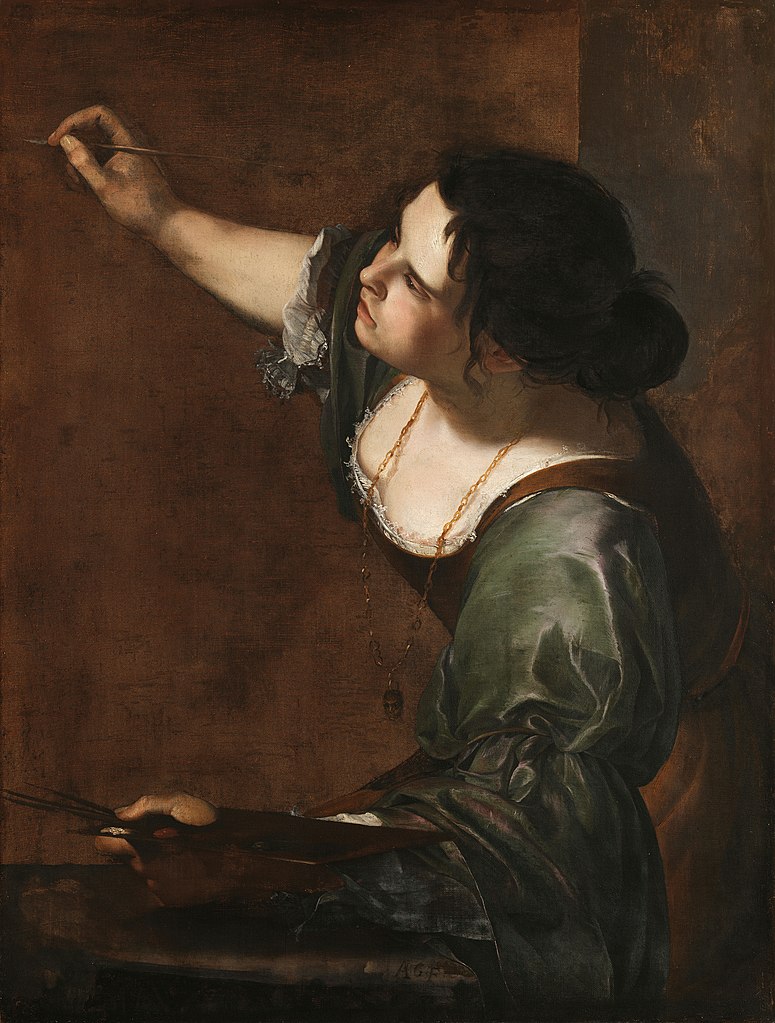
Women’s Self-Portraits: Artemisia Gentileschi, Self Portrait as the Allegory of Painting, 1638, Royal Collection, London, UK.
6. Adventurer Sofonisba Anguissola
Sofonisba Anguissola of Cremona painted throughout her life, but it is her self-portrait from a later part of her life that is unusual. Around 1610, she painted the first self-portrait of a woman in old age. This is a realistic portrait – wrinkles, thinning grey hair, plain black dress. But as Higgie points out, her intelligent dark eyes blaze. What is inexplicable is why this prolific portrait artist, one of the most famous European artists of the late 16th and early 17th centuries, who studied under Michelangelo, is still almost unknown today.
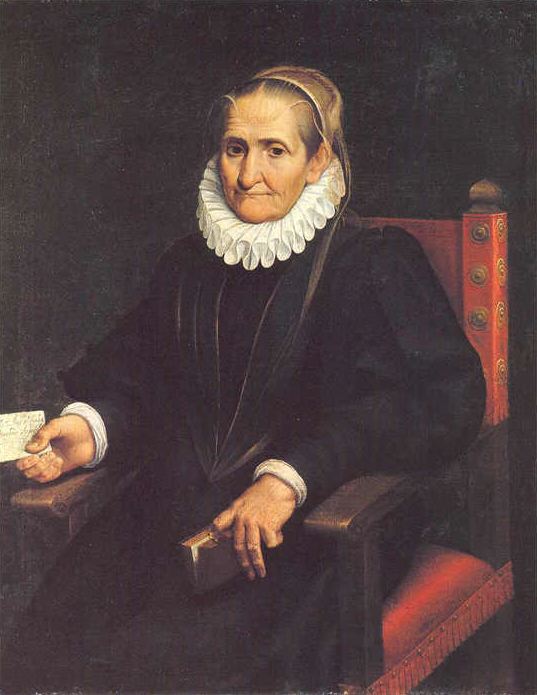
Women’s Self-Portraits: Sofonisba Anguissola, Self-portrait, 1610, Gottfried Keller Foundation, Bern, Switzerland.
7. Intense Frida Kahlo
Well known for her many searingly honest self-portraits, over her career, Frida Kahlo paints herself naked but also dressed in glorious color, solemn but also celebratory, in love but also despairing. Kahlo had polio at just six years old and was involved in a serious accident at age 18. Dying at just 47, she had endured over 30 operations and intense pain throughout her life. Some of her paintings were made from her bed, with a mirror suspended above her.
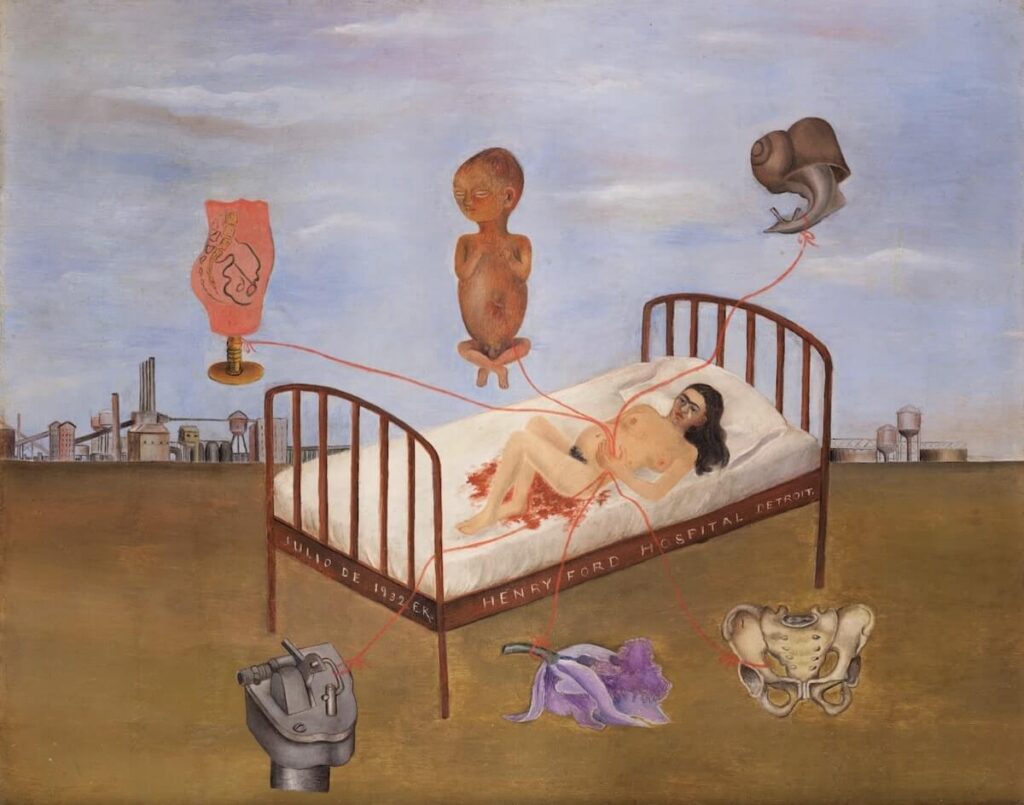
Women’s Self-Portraits: Frida Kahlo, Henry Ford Hospital, 1932, Museo Dolores Olmedo, Mexico City, Mexico.
8. Disturbing Helene Schjerfbeck
Higgie tells us that this artist said: “I have always searched for the dense depths of the soul that have not yet discovered themselves, where everything is still unconscious – there one can make the greatest discoveries.”3 Helene Schjerfbeck painted herself over 30 times throughout her life, from a young woman until she was close to death at 84. Her life was marred by war – she barely escaped the Soviet invasion of Finland in 1939, and her portraits from this time show a woman scarred and fearful for the future of her country.
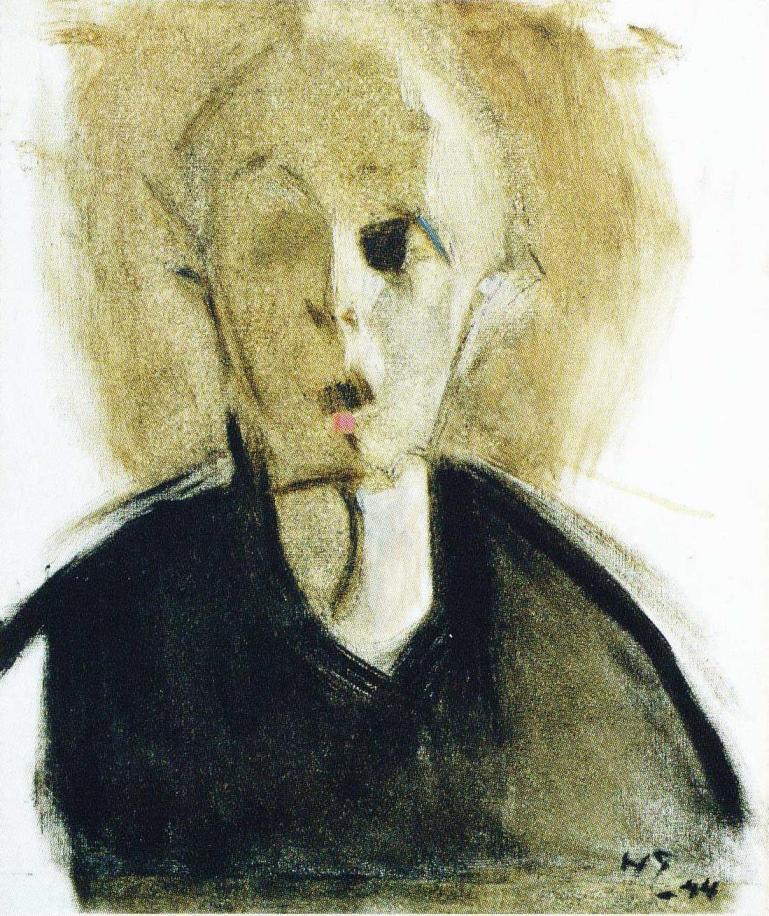
Women’s Self-Portraits: Helene Schjerfbeck, Self-portrait with Red Spot, 1944, Ateneum, Helsinki, Finland.
9. Black Activist Loïs Mailou Jones
Being a young Black woman in a country where racial segregation was the norm added another shocking layer to the discrimination faced by artist Lois Mailou Jones. Challenging the social norms, Jones entered her landscape painting Indian Shops, Gay Head, Massachusetts into the Corcoran Gallery annual art prize. She did this despite the fact that the museum prohibited African American artists from participating in competitions. The oblivious judges awarded Jones the Robert Woods Bliss Landscape Award. Decades later the Corcoran Gallery apologized, and Jones’ work is now held in galleries across the USA.
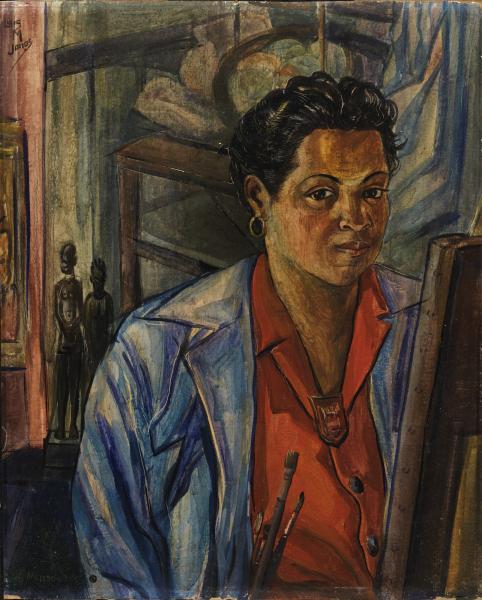
Women’s Self-Portraits: Lois Mailou Jones, Self-portrait, 1940, Smithsonian American Art Museum, Washington, DC, USA.
10. Creative Fulfillment with Paula Modersohn-Becker
Paula Modersohn-Becker painted her life-size Self-Portrait on her Sixth Wedding Anniversary in Paris – but the pregnancy she depicts is a symbolic one. What the 30-year-old artist was expecting when she painted her masterpiece was not a child but the fulfillment of her creativity. It is the earliest known painting of a naked self-portrait by a woman.
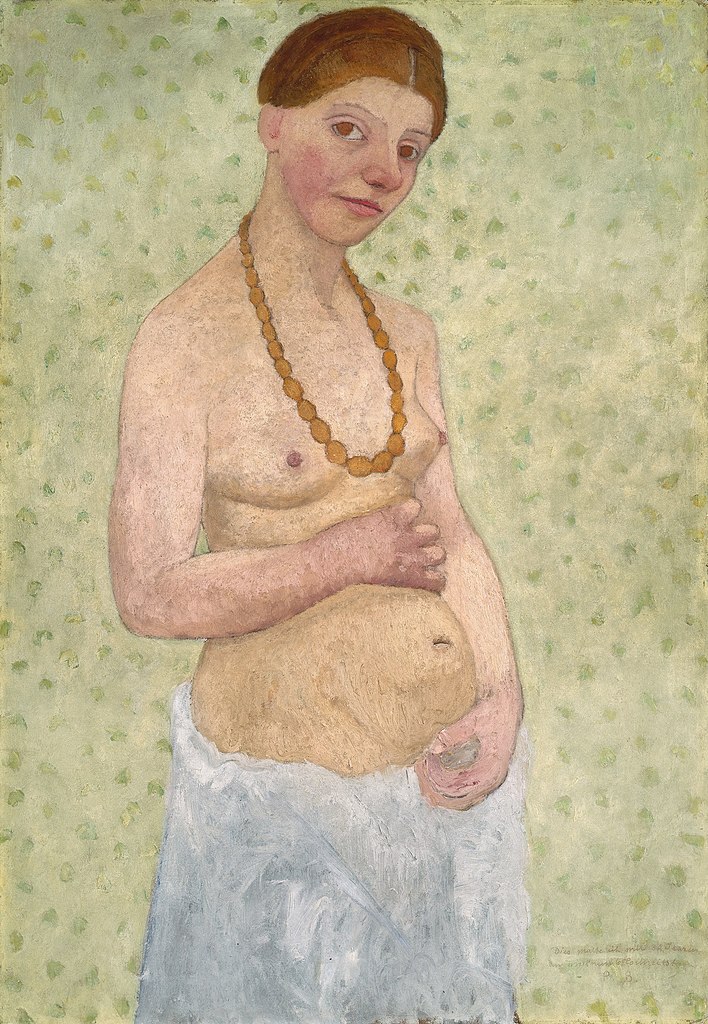
Women’s Self-Portraits: Paula Modersohn-Becker, Self-portrait at 6th Wedding Anniversary, 1906, Paula Modersohn-Becker Museum, Bremen, Germany.
11. Radical Alice Neel
Alice Neel painted her first solo self-portrait at the age of 80. She worked on the picture for five years. Higgie reports that Neel told an interviewer: “Frightful, isn’t it? I love it. At least it shows a certain revolt against everything decent.”4 Higgie describes it as an image that refutes idealized representations of aging. The unflinching gaze Alice Neel had used on all her subjects, she finally turned on herself, to impressive effect.
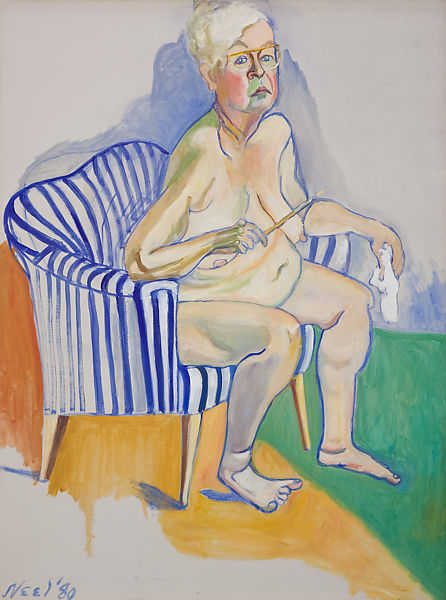
Women’s Self-Portraits: Alice Neel, Self-portrait, 1980, National Gallery, London, UK.
A Valuable and Fascinating Book
The Mirror and Palette contains extensive notes and a fine bibliography and index, making it a great addition to any art history student’s library. On the other hand, as a bedtime book, or as a coffee table adornment, it is equally valuable. Higgie shows us how feminism has shaken up how art history should be researched, recorded, and read. Excluded from art institutions, self-portraits were an accessible space for women – all they needed was a mirror and a palette. At least now artists who were previously ignored or ostracized are being recognized for their originality and resilience, and being integrated into the wider story of art. As Higgie says:
Unless you actively choose not to see her, she’s impossible to ignore. There are so many of her. I’ve hardly touched upon it. She’s here.
The Mirror and the Palette, Pegasus Books 2021, p. 262.
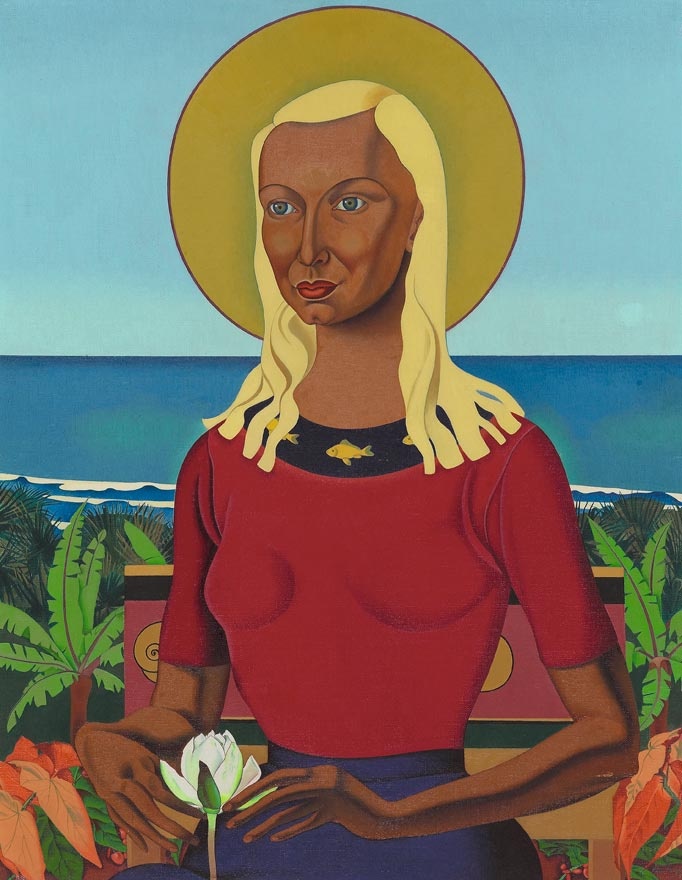
Women’s Self-Portraits: Rita Angus, Rutu, 1951, Museum of New Zealand, Wellington, New Zealand.
